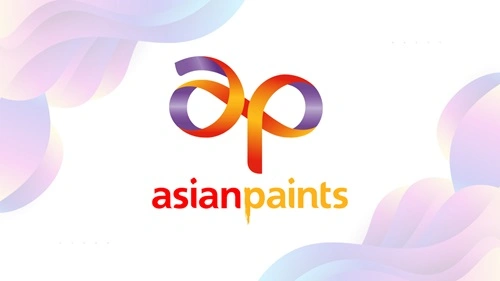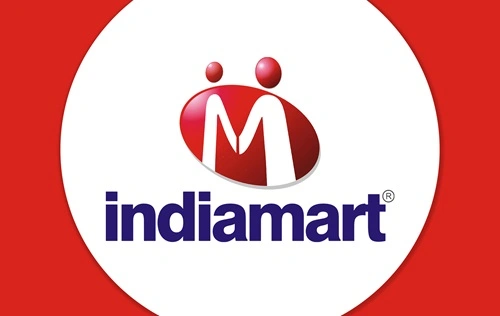Asian Paints is India’s largest paint manufacturer and one of the most recognized brands in the country’s building and construction industry. Established in 1942 by Champaklal Choksey, Chimanlal Choksi, Suryakant Dani, and Arvind Vakil, the company has grown into a global leader in the paints and coatings industry, operating in over 15 countries and serving consumers in more than 60 markets. Renowned for its innovative products, strong brand equity, and wide distribution network, Asian Paints dominates the Indian paint market with a market share of over 50%.
This article delves into Asian Paints’ business model, revenue streams, and strategies that have cemented its position as a leader in the paint and coatings industry.
Overview of Asian Paints’ Business Model

Asian Paints operates on a B2C (Business-to-Consumer) and B2B (Business-to-Business) model, catering to individual homeowners, contractors, architects, and industrial clients. It offers a wide range of decorative and industrial coatings, as well as home improvement solutions.
Key Features of Asian Paints’ Business Model:
- Diversified Product Portfolio:
- The company manufactures paints, waterproofing solutions, adhesives, and home decor products.
- Integrated Operations:
- Asian Paints controls the value chain from raw material procurement to manufacturing, distribution, and retail.
- Strong Brand Positioning:
- With a focus on innovation, quality, and design, Asian Paints is a trusted name for consumers and businesses.
- Wide Distribution Network:
- The company’s products are sold through a network of over 150,000 dealers across urban and rural markets.
How Does Asian Paints Earn Money?
Asian Paints generates revenue through multiple streams, leveraging its wide product range and strong market presence. Here’s how the company earns money:
a. Decorative Paints
- Primary Revenue Driver:
- Decorative paints account for the majority of Asian Paints’ revenue. This segment includes:
- Interior Wall Paints: Emulsion, distemper, and specialty coatings for homes and offices.
- Exterior Wall Paints: Weatherproof and anti-fungal coatings for building exteriors.
- Wood and Metal Finishes: Varnishes, enamels, and polishes.
- Decorative paints account for the majority of Asian Paints’ revenue. This segment includes:
- Products in this category are targeted at homeowners, contractors, and architects.
b. Industrial Coatings
- Asian Paints earns revenue by supplying industrial paints and coatings to manufacturers and businesses in industries like:
- Automotive.
- Packaging (coatings for cans and containers).
- Infrastructure.
- Revenue is generated through partnerships and long-term supply agreements with industrial clients.
c. Waterproofing Solutions
- The company has a strong presence in the waterproofing segment through products like sealants, roof coatings, and cementitious solutions.
- Waterproofing products are marketed to both homeowners and construction companies.
d. Home Improvement and Decor
- Asian Paints has diversified into home improvement through its Asian Paints Beautiful Homes service, which offers:
- Modular kitchens and wardrobes.
- Furniture and lighting.
- End-to-end home renovation services.
- This segment earns revenue from consultation fees, product sales, and service charges.
e. Adhesives and Sealants
- Asian Paints’ Adhesives and Sealants division generates revenue through products like:
- Tile adhesives.
- Wood glues and bonding solutions.
- These products cater to both retail consumers and construction professionals.
f. Tools and Accessories
- The company offers tools and painting accessories, including rollers, brushes, and sprays, as part of its complete painting solutions. These are sold through retail outlets.
g. Smart Paint Solutions
- Asian Paints has introduced smart painting tools and color visualizers that allow customers to preview paint combinations and finishes in real-time. While these services are often bundled with products, they also act as a driver for premium product sales.
h. International Operations
- Revenue is generated through operations in over 15 countries, with a strong presence in Southeast Asia, the Middle East, and Africa. The company tailors its product offerings to suit local markets.
i. Value-Added Services
- Asian Paints earns revenue from value-added services, such as:
- Professional painting services (offered through Asian Paints Safe Painting Service).
- Home consultation for color selection and decor ideas.
j. Partnerships and Licensing
- The company has partnerships with real estate developers and infrastructure companies for large-scale projects, generating bulk revenue.
Why Asian Paints’ Model Works
Asian Paints’ business model is built on operational efficiency, strong brand equity, and a customer-centric approach. Here’s why it works:
a. Market Leadership
- With a market share exceeding 50%, Asian Paints dominates India’s decorative paints segment, benefiting from economies of scale.
b. Strong Distribution Network
- The company’s extensive dealer network ensures availability across urban, semi-urban, and rural markets, making it a trusted choice for consumers nationwide.
c. Focus on Innovation
- Asian Paints continuously invests in R&D, launching innovative products like washable paints, anti-bacterial coatings, and textured finishes.
d. Brand Loyalty
- Effective marketing campaigns and initiatives, such as the “Har Ghar Kuch Kehta Hai” campaign, have strengthened consumer loyalty.
e. Diversification
- By expanding into adjacent categories like waterproofing, adhesives, and home decor, Asian Paints reduces dependency on its core paint business.
f. Technology Integration
- Tools like color visualizers, digital consultation, and AI-based recommendations enhance the customer experience and drive sales.
Financial Performance
Asian Paints’ strong business model is reflected in its robust financial performance:
Revenue Growth
- The company reported consolidated revenues of ₹34,500 crores in FY 2023, driven by growth across all segments, particularly decorative paints and home improvement.
Profit Margins
- Its focus on premium products and operational efficiency helps Asian Paints maintain healthy profit margins, even during periods of raw material price volatility.
Market Presence
- With over 27 manufacturing plants globally and operations in 15+ countries, Asian Paints is a major player in the global paints market.
Challenges and Opportunities
Challenges
- Raw Material Costs:
- Fluctuating prices of raw materials like titanium dioxide and crude oil derivatives impact margins.
- Intense Competition:
- Competes with players like Berger Paints, Kansai Nerolac, and AkzoNobel in India.
- Seasonal Demand:
- Sales are influenced by weather conditions and festive seasons, leading to fluctuating demand.
Opportunities
- Rural Expansion:
- Expanding into rural markets offers untapped potential due to rising incomes and urbanization.
- Sustainability:
- Developing eco-friendly paints and coatings can attract environmentally conscious consumers.
- Home Improvement Market:
- Growing demand for home renovation and modular interiors presents a significant growth avenue.
- Global Markets:
- Expanding its footprint in emerging markets like Africa and Southeast Asia can drive future growth.
Future Prospects
Asian Paints is poised for continued growth by leveraging its strong brand equity and diversified offerings. Key focus areas include:
- Expanding its home improvement and decor portfolio.
- Investing in sustainable and eco-friendly products.
- Enhancing its digital and omnichannel presence.
- Increasing global market penetration through tailored product strategies.
Conclusion
Asian Paints’ business model exemplifies innovation, customer-centricity, and operational excellence. By consistently introducing new products, expanding its service offerings, and building a strong retail presence, the company has become a dominant force in India’s paint and coatings industry. With its focus on sustainability, digital transformation, and geographic expansion, Asian Paints is well-positioned to maintain its market leadership and drive long-term growth in the global paints market.

